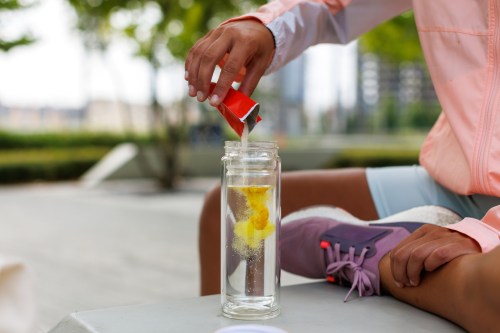Nutritionists cut the cheese on whether or not you can eat mold…on cheese
Life's biggest riddle, answered: What happens if you eat moldy cheese, according to a nutritionist. Also, the truth on whether cheese is mold.

My entire life, I’ve thought that cheese is a form of mold. But then, last night I adventured into my refrigerator looking for a cheesy snack, only to pull out my fave crumbled parmesan to sprinkle on something. I ate it, and when I was finished and putting the container away, I… saw that there was actual mold on the cheese—as in, little blue flecks that I was horrified that I had just consumed.
To see whether I was minutes away from dying or not, I immediately sought a nutritionist’s take on the matter. First of all, some types of cheese are meant to be made with mold, according to Lisa Richards, certified nutritionist and author of The Candida Diet. “These include various types of blue cheese, as well as brie and camembert,” she says. Then, similar to mold, it takes several types of fungus to make cheese. “These are mostly from the Penicillium family,” she explains. “For example, brie and camembert are made using Penicillium camemberti. Cheeses made from mold tend to be the softer varieties.”
More live stuff lives in cheese too—like bacteria. “Most cheeses are made with bacteria, using live cultures from the Lactococcus, Lactobacillus, or Streptococcus families,” says Richards. “These are more likely to be harder cheeses like cheddar or parmesan.” Fun fact: Some of these probiotic cultures used in cheesemaking are the type you’ll find in your probiotic supplements.
But here’s the thing—the types of cheeses made with bacteria are also likely to contain small amounts of harmless mold, according to Richards. “It’s difficult to completely exclude mold from the environment in which cheese is made, and to some extent it’s part of the natural, microbiological process of making cheese,” she says. Well, this is good news. It also turns out that people have been eating mold and fungus (via cheese) for, like, ever. “If you like cheeses like camembert or roquefort, you are already eating mold and that’s okay,” says Richards. “The varieties of fungus used for these cheeses are harmless and have been eaten for centuries.”
On the other hand, if you find mold on a hard cheese—like cheddar or parmesan, for example—Richards says to use caution. “These molds are unlikely to be harmful, but there are some varieties that can negatively affect your health,” she says. “Aspergillus niger, also known as black mold, is one type of mold that can cause a number of respiratory symptoms. It’s rarely seen on cheese, but it does occasionally happen.” On the occasion in which you see this, she says it’s fine to just cut around it. “Cut an inch around the mold and discard that piece—mold doesn’t spread easily in hard, dry cheeses, so the rest should be fine,” says Richards.
If you’re seeing mold on soft cheeses though, don’t continue to use it on your cauliflower pizza. “Soft cheeses like mozzarella, ricotta, and chèvre are a different matter—they provide an environment that contains more moisture and is much more conducive to fungal growth,” says Richards. “Pathogenic molds can spread faster and further in these cheeses, and this growth is often not immediately visible. If you see mold on one of these cheeses, it’s time to throw it out.”
Think you’re fine because you only eat alt-cheeses? Not so fast. “Mold can grow on any type of cheese,” Richards tells me when I ask about the non-dairy varieties. “All it requires is moisture and the right temperature.” So just watch where you….ahem…cut the cheese.
Oh hi! You look like someone who loves free workouts, discounts for cult-fave wellness brands, and exclusive Well+Good content. Sign up for Well+, our online community of wellness insiders, and unlock your rewards instantly.










